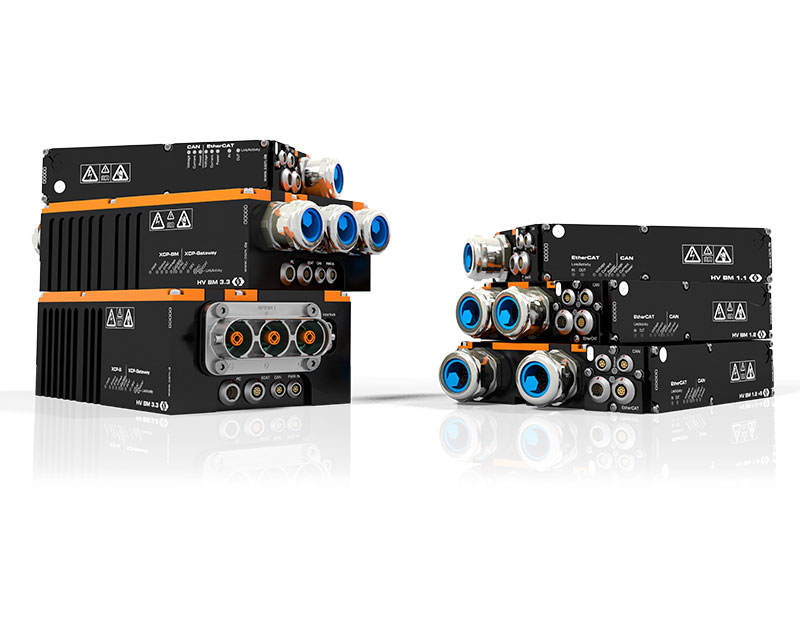Power measurement with HV Breakout Modules
Direct output of RMS and power values
The HV Breakout Modules enable the calculation of RMS and power values in the module from the internal sampled values of current and voltage. The calculated values are output via CAN and XCP-on-Ethernet, depending on the module type. This makes it easy to perform various analyses in the road test and without the use of special hardware and software.
Power channels of the HV Breakout Modules
- Available by standard
- Instantaneous power p
(for HV BM 1.1 / HV BM 1.2 / HV SAM1 evo / HV BM 3.1)
- Instantaneous power p
- With Option Calculated Channels
- Active power P in W
- Apparent power S in VA
- Reactive power Q in var
- Power factor λ
- RMS voltage URMS in V
(number of RMS voltage values depending on the number of measured phases) - RMS current IRMS in A
(number of RMS current values depending on the number of measured phases)
Description
The additional output of the power channels is licensed separately with the Option Calculated Channels and is available for all HV Breakout Modules (HV BM) / HV Split Acquisition Modules (HV SAM) 1.x and 3.3. Via the LicenceUploader necessary options can also be added to the modules afterwards.
Depending on the module type, the RMS and power values are transmitted directly to the measurement computer via CAN and XCP-on-Ethernet as separate measurement channels.
Mobile use
Classical power analyzers are typically laboratory instruments that are insufficiently suitable for mobile use in test vehicles due to their intended purpose, dimensions, weight and high power consumption.
The rugged design and high operating temperature range (-40 °C to +120 °C) make the HV Breakout Modules particularly suitable for mobile use. The compact dimensions of the modules allow decentralized installation in the vehicle directly in the HV power cables.
This makes the HV Breakout Modules particularly suitable as mobile power analyzers in the field of benchmark tests, component tests and system monitoring.
RMS values
For periodic but non-sinusoidal currents and voltages, RMS values are particularly important parameters for interpreting load cycles.
The HV Breakout Modules operate internally with sampling rates of 1 MS/s and 2 MS/s, respectively, so that fast voltage and current signals can be measured accurately. The calculation of their RMS values thus captures the higher frequency components very precisely.
Direct output of power values
The direct output of the power values as separate measurement channels via CAN and XCP-on-Ethernet reduces the requirements on the measurement computers used. In addition, no special software is required for the calculations; instead, the power values can be read out directly in the DAQ software.
Another benefit is the recording of the calculated values with data loggers, e.g. UniCAN 3 Data Loggers, in the road test, which saves storage space and simplifies subsequent evaluation.
Integration time
For the calculation of the effective and power values, integration times of 10 ms to 10 s are freely selected for each value. The integration time remains constant for the entire duration of the measurement.
For the analysis of AC systems, such as variable frequency motors, the HV Breakout Modules are used in combination with the eMobilityAnalyzer function library for Vector vMeasure and CANape from the Vector CSM E-Mobility Measurement System. This solution enables accurate investigation of leakage currents and symmetries as well as calculation of efficiencies and correlation with measured values from additional CSM measurement modules (e.g. temperatures).
Technical Data
HV Breakout Modules and HV Split-Acquisition-Modules with Option Calculated Channels
Calculation of RMS and power values directly in the modules with the Option Calculated Channels is available for the following types:

 Home
Home Newsletter
Newsletter





